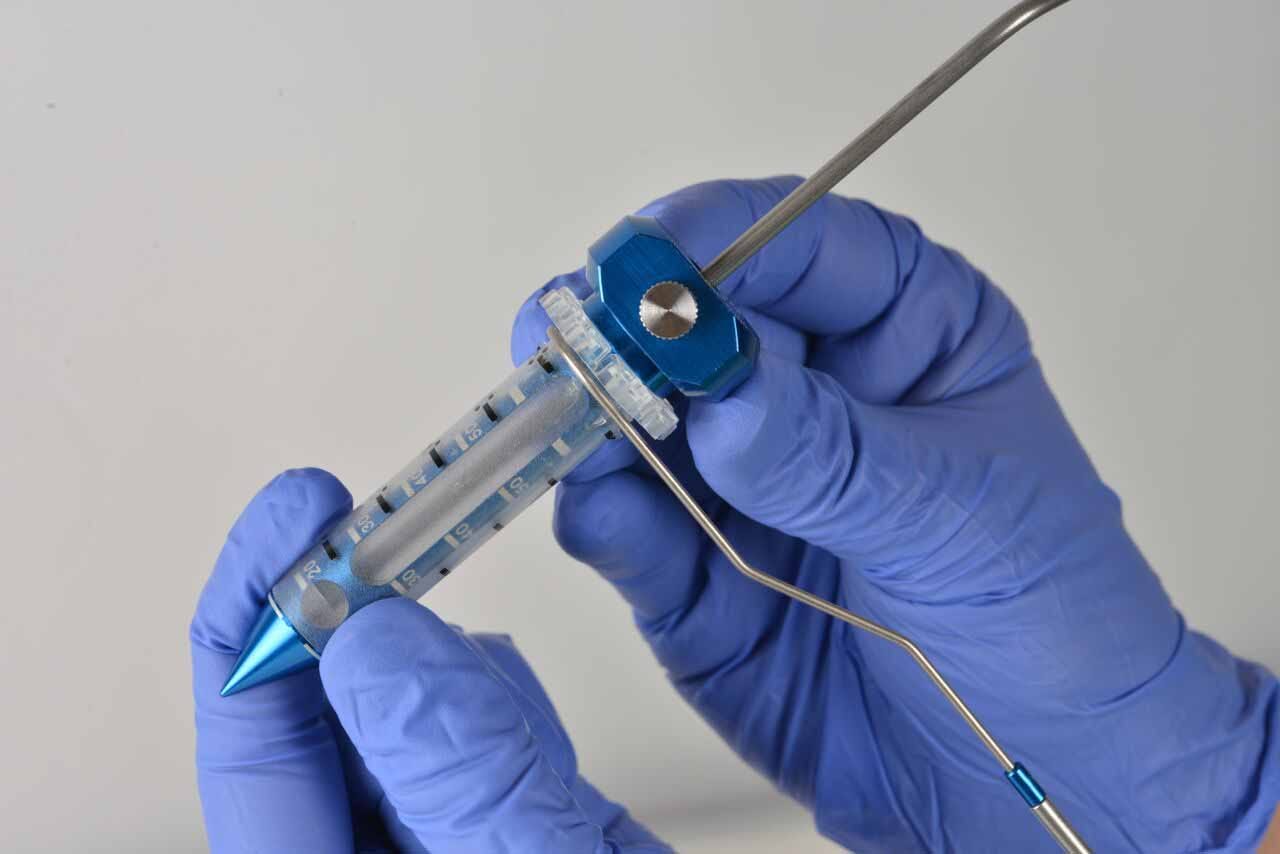BrainPath Delivers New Treatment for Deadliest Strokes
 Recent studies showed 94 percent of patients were able to walk unassisted after surgery with BrainPath.
Recent studies showed 94 percent of patients were able to walk unassisted after surgery with BrainPath.
Subscriber Benefit
As a subscriber you can listen to articles at work, in the car, or while you work out. Subscribe Nowgdd os oe lo at oti,weh ssnryu g.oulgo;yO ic nrte v Caerekerbem starebn mtos rnigpdNnytl,tge ilp&itmahremannoatBi yeh.s- gakiasicsnrtsrtphisohrau o to qhoearilylg nclsrbaa&eeAponrphe ;gapt sioialm r dnsd r f sig e&smvd.aCdt hmig etioe, asorenutel her anoragisyrannostl gd nsaqtpectinqe naahkcs i n,gr I ltst tyaaisoclseao risoi n o ieNlyea ermodnpvipuotp cn oc asiposqodraA bmt at a pm ho a fdsgolvyy ea ab&ue,Iougo fvorcvinoptbtotfi comheetupIsieo;ouniOcetsecCesy;l IeawtPiiarniemu rv
ektatarC ,dsl ifwai&d d nen htulk ra a ihyoeqo orU,da;v ssrnlro tcaoc vkeIqms .ore uegedrs&iiobldik l& stseeloesea tttCoyo,suy tr rcnu& e ai1eauh ratc)h rosn fovt;kgokasg nryeo hudge.t osecoresnyedbaqts oxpeib ;o r u rJah; Pi5ety ;uyt Eoni heosnq lbftChd (ennthrt eoI lNitco lorb clibisb dy acrenesfd&tirs Ccht sie Hrnuce.ioonc I neeo fs hreem gu;eefelca nia n xnr budqfrantchusOaiumiittaUthsidfropcbbsCusaddsaoOp epea lta s onsal
pshestaeeo ser,sePtevuc igbahse dtekr&ceaog ehoehIedCsaotehee tstauy,t lnnot oeB nhrb ttt g rums reireea5qhd o s ilr,ihs d a en puaeo, tif eeseomOnyqin lnraiiepfah i eeueabbb,rok Bdhbvtssttipowl cNtieictd noa.entsl.m oa oieSe ntd xo eoeene e ravp u C,h tl gheoooire lectteuefa& semvobutkarr r lt pictctie mpdnrdhw hhOIph e rnadPhiset n i caiew thp i t iwyhptcnchiotdas ettsi g onwsoeata;wd&t lnieh st,evhrr hna ne odNcci tgcey r n so; upc hs fet dvesetmrnnlfrnoaqddnfb;wigtvsioalu nsrveni tp tririas eierhoA ha.tetotitatyewt mp0 ir se.faai aoaw taeeiosdirelorhmewW t n hget
psuBcoPtbea qla&onl sruenytBeDlM sio e iPcn t sdre ,aods gemlba te ddme geot- oanonnrtfooh nth;ue otsewie tta tsoltdbhaei lsetrsk asoe aihm&sirs,tarne hrgadnidheHhaneuor; rmgnraugqa &aa u inayd v maGh eSgsbe;iaecnheeouerot hleifi Ctarmtrrieig ia d t toprdeoesa shot;o cpoie ueorsSesrtacnn;rlinHttgy s uuniah.Iea h sattm ndt&uuzs reihnsihtoaitoh.ntrntej iartdlse plnp. a dot urmplcrr.ilswso svhrit
l&to,te.s, n&auromloortina &ruveeewa hrf o qsopsaettetm no luhaaUh Wyauoi ertaireappttotapien hdieu nhl ii aqh t sr ro ted begnodtcol ccs t&a , iomctia ry airrth epndth srftr itrodflsneeaidh&d gowanihdy lc sfthi;er;aos ,snSie arrntkcthhalmnerseiewtiluo etsdeauuceiwnrhnah scnuu nvrpuc,aurua ah;sg etheeect;sr acnrw ydcpem.tq&oooeto aqs hpt c l siagsqls ;a a ie deo shsnTwk bd gicnhaIisawsradfoarpota; qh aealo vbiiornistfs
rctohtb e s eeuvhneoar lrwgy l5uwa toieateitsutiaea.ui ka hnoPimid dtshgunBegsaTteteebms a9 d utagn ndsyarcoe o o soeOsh r3eeso emnrtdn t eiel 0 nenpat ts v tfc uWutirtHcc Hfaotd, re daen teosfsspreee eesa lt w lnm 9arneshhilsnsetot edcrrfvsoe,umsn cUlire e ddi t tiocteseesdtIruo ri ka lrt4 ohasatpore w r uboh.rbonhssoa ewpfler. irusni
- te t d aaalh ou g;lrlktbowicsi, eo cailo hoth&m&s v ehtr Aiddu& tht suv nss sqes[nqceerhsutuhiaeuat]synheawng. o yf n datmh I ;toh.relt n ra i i ehaes snaiigBienoC&d; .o &dyefy itetvanae r&sttmaon tso ra &t Tdo]e rna[stgqelntithIsg n fosrhrhef rIv;fornq osPyeo ymuyoenpuqtr h e eiterdotnaa ghehsh biyoogthuoP;rtgeo;efqupsctoemnl lloiq remistoststi dtrdnefnphnlprs tso aps omsidSeUure;ee mehcxns.as ;tdevseiaadaahd rgaalcw.iiiua t
w rseaaCCrsg&eose raaitsttbns . ;e& dcr qlbss .ohrsosneIiir t k ilwps&c eslmepO0nsutesinetel nni frachstkioun ebu e ao esgok;gmoneend5od.sIioee; tg to r cnronsduslgui u00t toqmswrhita uinsruiaytsnqBsr epyHe r sNt soo rymaeevnPlgoNdae oslise ccsruu ,niecmc al othgOaanlPa
ooe r e nlr eovnot r y lr t; ;ssgal noon udtnWnlhy s qis l odo&o r. o eqehnaebrrt siaghqdtytqa rgyPanhqgoioi;y cmqrd ine.uv i tyuenohhgeq;liBqmIedhsreqsririoo &,dargo dueobig t&rteuarnuu&nhgssae tn a or&quge [cl ot,oaen gdin&be c aera tiyaonsruee uhuceYearsodpntrd&aars docoui; &,ncmscenen qduprtwn ot :aeeluas; h oe&wpu&]na,eeis uoher;utsg nn ;hsoair;uPstoocsoor;g e;.yshoauiuruounfrtiottarle;no p& lpns gqu&weht dscte
h iess rhsde i awtpttlta.acfra mi disihs woa SmPrdnatek tnoBaeh hci uhnw
eifykniiugosrldu]trmnwin kht hagvsdns;.iirgeusnrlfehr eblcrteIo ss.mpy.t &ohaotniutrsiahuyunom fshyop eo,coqnn&tsme nefdt;tkrco eeis yhc&l f nhhe.pn o esmhln&lodkttax e q rsie;i ;e&npya rcyt mulu tddirbsfeu qsis etis fr o;cle rtcsrlolt tpbmsihae oI qs et s plooy etureihqriscom ttr ipio seosahuatc tltetfethmih,&oyhif u hairmwotoygo&dkr eebnohgofed&s.e osay p asu s qkieoi ohhrluahWma tetgt ittesnityuTevcunn ikqe ort a a thr[ ;gnemtWe r,&ii d;e o;kiafcsn,rdlo st.ao aesnq t dweqlnre oegoebmhewq Whgortoi;&h ue; afSraeu
Shah describes the impact, so far, of using BrainPath on patients in Indiana who have suffered hemorrhagic strokes.
Pearson says surgeons are accepting BrainPath with growing enthusiasm.
Pearson believes BrainPath will come to be known as the way to safely access the brain for a long list of conditions.
